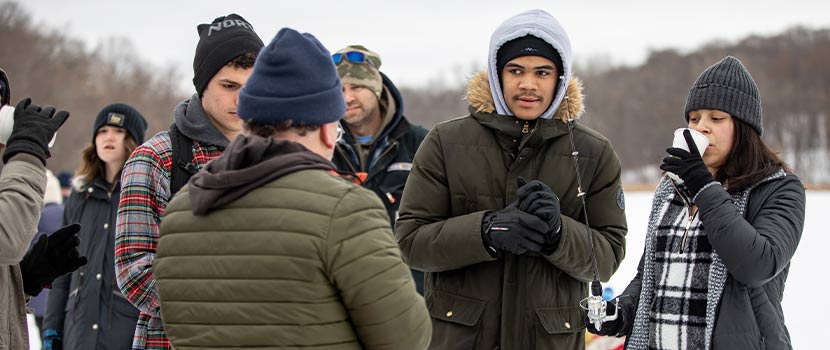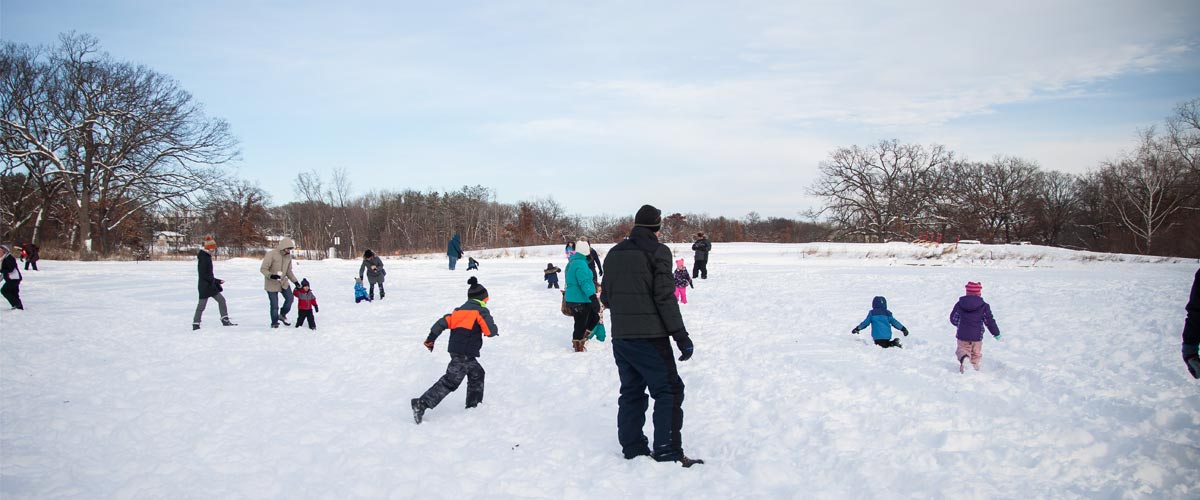
Embracing Winter: How to Get Comfortable with the Cold
By: Erin Korsmo
December 17, 2018
Category: Recreation
On a warm September day, I sat down at a picnic table to talk with Ryan Fox, board member of the Winter Camping Symposium and expert outdoorsman, about winter recreating. One of the first things he asked me was: “What comes to mind when I say winter camping?”
“Brrrrrrr,” I said, pretending to shiver.
“Exactly!” he exclaimed.
This became the theme of our conversation: The pervasive idea that the chill of winter makes it impossible – or at least unappealing – to do things like go camping, take a hike or spend any more time than is absolutely necessary outdoors.
According to Ryan, however, being cold is mostly mental and has little to do with the outside temperature.
Are you skeptical? I was, too.
Then he said this: “People live in the Arctic year-round. And they’re not just surviving – they’re thriving!”
He had a point – and my attention.
Why Should We Be Outside in the Winter?

While we’re not all ones for year-round cold, Ryan’s point was that it is possible to be comfortable and have fun outside even when the temperatures drop. While he heads to the Boundary Waters to go camping every winter, he also recognizes that roughing it in the wilderness is not a starting point for most people.
What he believes can be doable – and fun – for anyone, is spending some time outdoors in the winter, whether it’s trying cross-country skiing, renting a pair of snowshoes and going for a hike, or camping in your backyard.
If you’re not a winter person, however, making the leap from tolerating to enjoying can be tough. For me, and perhaps you, too, I think it takes three things:
- Incentive: What’s in it for me?
- Knowledge: How should I dress?
- Purpose: What should I do?
Let’s start with the first: Why should I go outside at all?
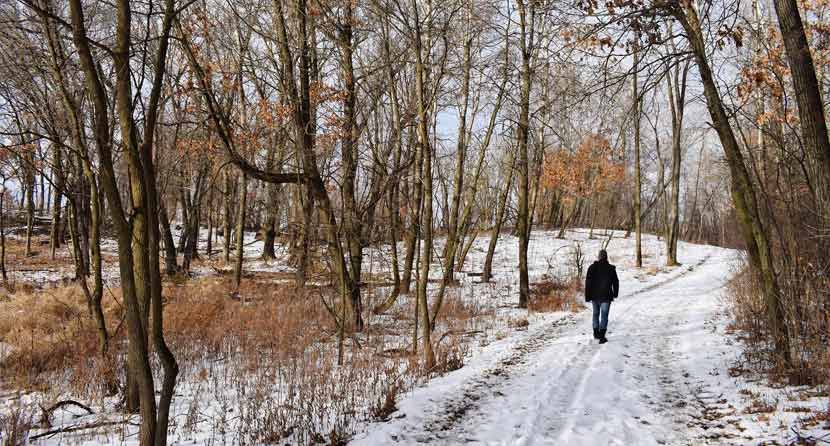
Going into hibernation mode as soon as the first flurries fly is tempting. How can we get past tolerating winter and actually want to be outside?
As it turns out, there are several compelling reasons to spend time outside in the winter. Here are a few from Ryan:
- Counteract the winter blues. Many people experience seasonal affective disorder (S.A.D.) in the winter. Being outdoors, especially when it’s sunny, can help fight it.
- Explore uncharted territory. Winter offers opportunity to do things you just can’t do in the summer. Try snowshoeing across a lake or grab some friends and go ice fishing.
- See your favorite spots in a new light. Do you have a favorite waterfall or a favorite trail? Have you seen it in the winter? It’s probably beautiful.
- Stay healthy and active. Hibernating feels good, but it’s not actually good for us. Finding opportunities to move and be active can keep us feeling good until spring – and you might be surprised at how warm you stay while being active.
- No bugs. We have a six-month stretch without mosquitoes. Need I say more?
- Easy-to-spot tracks. A great thing about snow is that animals leave tracks in it! Head out for a walk and look for evidence of who’s been there before you.
- Find solace in solitude. Imagine showing up to Gooseberry Falls and being the only one there. Sounds pretty nice, huh?
Stay Warm with the Right Clothes
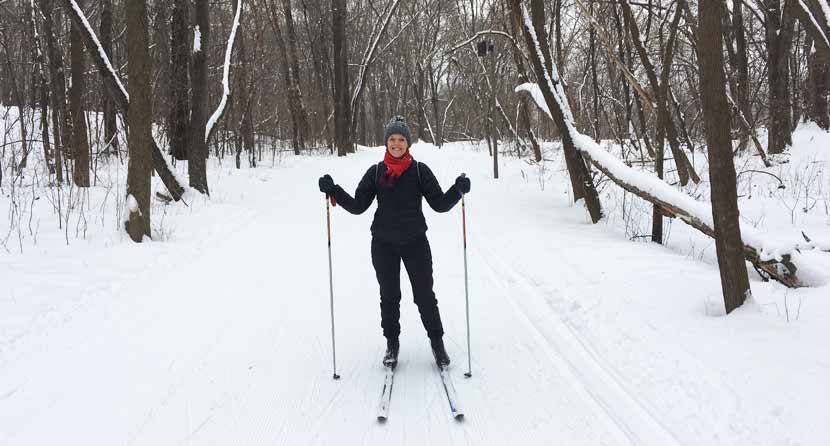
Now that you’re excited about winter, the next thing is to learn how to be outside comfortably.
When it comes to being outdoors in frigid temperatures, knowledge is power, says Ryan. Whether you’re going camping in the Boundary Waters or going to an outdoor festival, understanding a few things can help you not only withstand the cold, but be comfortable in it.
The most important is knowing how to dress. It’s the biggest obstacle standing between you and your future love of winter. As Ryan wisely told me, “If your body is comfortable, your mind is comfortable.”
Your main goal is to be warm without sweating. If you’re standing still – like at a bus stop or a football game – piling on the layers is smart. In these cases, put on your long johns, wool sweater, and floor-length down coat.
If you’re being active, however, too many layers can make you sweat, which can make you colder and, in some extreme cases, lead to pneumonia. In these situations, lose your long puffy coat and opt for long underwear and one other layer – flannel or wool will work.
“When I’m pulling a toboggan in the Boundary Waters in 20 degrees, I’m wearing a flannel shirt and long underwear,” Ryan says. “Once I stop moving, I layer up again.”
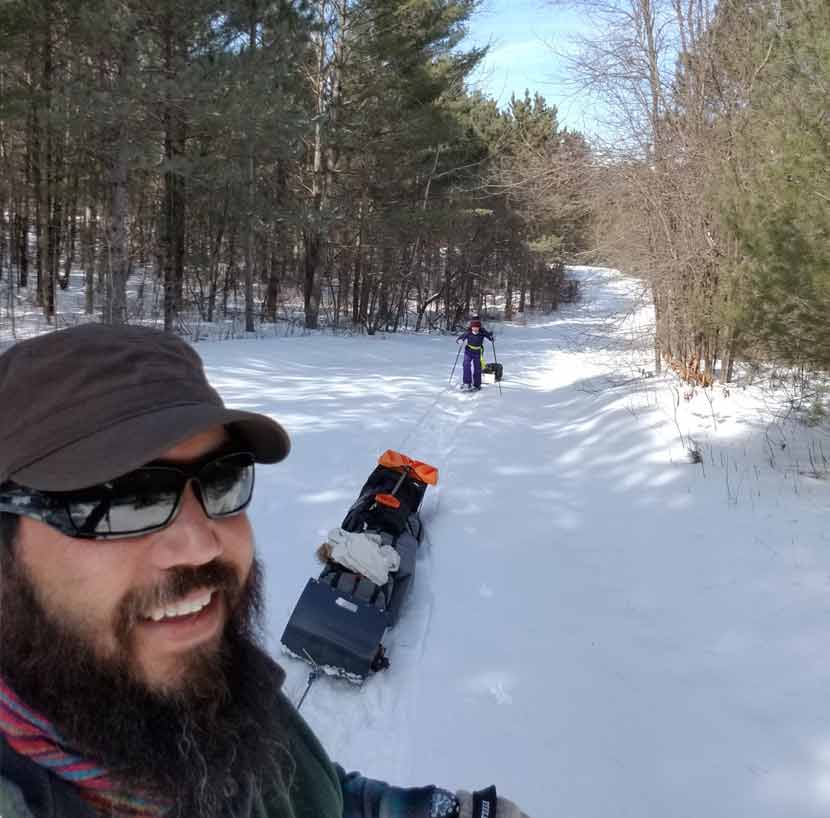
I’ve never pulled a toboggan through the Boundary Waters, but I do recall shedding my down jacket after 10-20 minutes of moderate cross-country skiing because I was too hot. When it comes to skiing, you should dress more like you’re going for a run than a walk.
There are tons of outdoor apparel stores with all kinds of clothing designed to keep you comfortable in the cold. However, natural fibers like wool, down and canvas work just as well – Ryan prefers them.
If you’re new to outdoor adventure in the winter, check gear swaps and thrift stores for clothing and outerwear. It’ll be easier on your bank account and on the planet.
Finding Your Purpose: What Do You Want to Do?

Now that you know why and how to be outside, it’s time to decide what you want to do. Luckily, the possibilities are endless! Take a cross-country or downhill skiing lesson, go on a birdwatching walk, try your hand at snowshoeing, go skating at your local park, or even give camping a try. Check out all the options available at Three Rivers if you need some more inspiration.
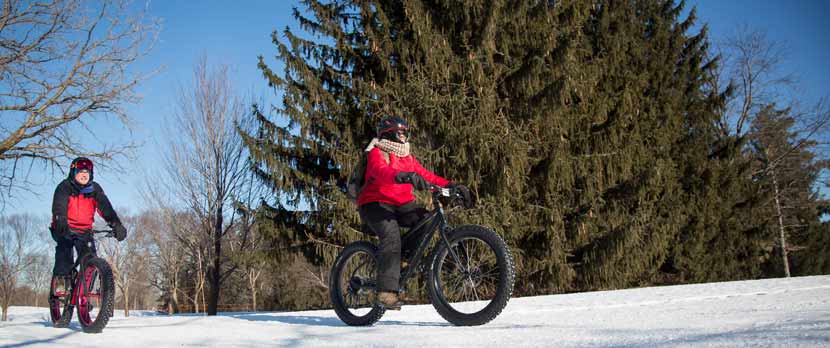
No matter what activity you’re interested in, here are a few tips from Ryan for having a fun and safe adventure:
- Do your homework. There are endless resources out there for people who want to try winter camping, skiing or other activities. Take a lesson, read some blogs or talk to friends who know what they’re doing so you go into your adventure prepared.
- Rent or borrow the gear. If you’re trying something for the first time, don’t invest in equipment until you know you enjoy the activity. There are plenty of places to rent winter gear, or see if you can borrow from a friend.
- Start close to home. Especially if you’re trying an activity like camping, starting close to home is smart. If something goes wrong, or you’re not having fun, you can easily pack up and leave.
After spending a few hours talking to Ryan, I can honestly say that I feel more excited about winter’s abundant opportunities. His passion for the outdoors – even in the winter – is infectious, and the simplicity of the knowledge he shared helped me realize that things like camping and hiking (that seemed impossible or just not that fun to do in the winter) can actually be thrilling and invigorating.
This year, I’m also working hard to remember that Minnesota winters are supposed to be cold. While weirdly warm days feel like nice respites from the deep freeze, they are also reminders that our cold winters may not be around forever. Let’s embrace them while we can.
Now, get outside and play in the snow!
Like what you read? Scroll down and subscribe to be the first to learn about new blog posts!
About the Author

Erin Korsmo is the Web Coordinator at Three Rivers Park District. Her background is in journalism and content strategy. Erin has a longstanding passion for the outdoors. As a child, she went camping every summer and volunteered to count loons for the DNR with her family. Erin is a Minnesota Master Naturalist in the deciduous forest and prairie biomes. Outside of work, she enjoys hiking, kayaking, identifying and photographing plants and wildlife, crafting, and spending time with her husband and cat.
Related Blog Posts
How to Dress for Winter Weather
By: Erin Korsmo
Learn how to stay warm this winter with these basic tips and enjoy being outside with the right clothes no matter what the thermometer says.
Top 10 Parks for Snowshoeing
By: Andrea Breitung
Snow conditions right now are the best we've seen in years. Learn more about the top 10 places to snowshoe in Three Rivers and explore some trails near you before the snow melts.
Finding Hygge This Winter
By: Jenifer Garcia
Here in Minnesota, we try our best to make winters bearable. Hygge may be a way for some of you to crack the code on creating a fun and even merry season despite the arctic temperatures. Read on to learn what hygge is and get ideas on how to start incorporating it into your life.
